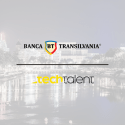The IT industry is set to undergo significant shifts as we approach 2025, with staffing trends reflecting the rapid evolution of technology, changing workforce priorities, and innovative organizational strategies. Businesses and professionals alike must adapt to these trends to remain competitive and future-ready in an increasingly technology-driven world.
In the following, we will explore some of the key trends that are reshaping IT staffing. By delving into these trends, companies can better align their strategies with emerging realities, and IT professionals can position themselves advantageously in the evolving market. Let’s take a closer look.
1. AI-Powered Recruitment: Revolutionizing Talent Acquisition
Artificial intelligence (AI) is rapidly becoming a cornerstone of recruitment, enabling organizations to make hiring processes smarter, faster, and more effective. AI-driven platforms can analyze resumes, rank candidates, and even predict their likelihood of excelling in a particular role, all while saving recruiters significant time and resources.
Beyond resume screening, AI is being utilized to conduct sentiment analysis during video interviews, assess technical skills through AI-generated coding tests, and even automate the entire candidate engagement process through chatbots. These advancements allow HR teams to prioritize strategic functions, such as negotiating offers and assessing how a candidate aligns with company goals.
For candidates, AI-based systems ensure a more streamlined hiring experience. They receive faster feedback and can leverage AI-powered tools to prepare for assessments. As these technologies continue to evolve, expect recruitment to become even more efficient and personalized.
2. Skill-Based Hiring: A Shift from Credentials to Competencies
The IT sector has been a pioneer in moving away from traditional degree-based hiring practices. As businesses grapple with rapid technological changes, they are prioritizing candidates who demonstrate job-ready skills over those with formal academic qualifications. This shift enables companies to access a broader talent pool and find professionals who can deliver results immediately.
For example, many organizations now rely on technical tests, hands-on evaluations, or project-based assignments to assess a candidate’s real-world capabilities. Digital platforms and professional networks serve as virtual portfolios, enabling IT professionals to highlight their skills through completed projects, contributions to collaborative initiatives, and peer endorsements.
For job seekers, it is increasingly important to demonstrate their expertise through practical work. Building a strong online presence, completing relevant certifications, and contributing to industry discussions are key ways to stand out in a skill-driven hiring market.
3. The Demand for Cybersecurity Talent
Cybersecurity remains one of the most critical areas in IT staffing, driven by the ever-growing threats of data breaches, ransomware attacks, and sophisticated hacking attempts. As organizations continue to digitize operations and store sensitive data online, they are investing heavily in cybersecurity to protect their assets.
The demand for professionals specializing in areas such as threat intelligence, vulnerability assessment, and cloud security has skyrocketed. Industry-recognized certifications and specialized training programs have become critical for IT professionals aiming to excel in this rapidly growing field.
Beyond technical skills, organizations are also looking for experts who can educate non-technical teams on best practices and implement security-first cultures. Cybersecurity professionals are no longer limited to defensive roles; they are active participants in organizational strategy, ensuring systems remain resilient and trustworthy.
4. Upskilling and Reskilling: Staying Relevant in a Rapidly Changing Field
With the fast pace of technological innovation, skills that were in high demand a few years ago may no longer be relevant. This reality has made upskilling and reskilling imperative for both employers and employees. Companies are actively encouraging their workforce to learn new technologies, programming languages, and tools to stay ahead.
Employers are turning to online education platforms to provide employees with continuous learning opportunities. Many companies are also partnering with universities and industry organizations to create tailored training programs.
For IT professionals, embracing a mindset of continuous learning is essential. Those who actively pursue certifications in areas like cloud computing, AI, blockchain, and DevOps will find themselves better positioned for future opportunities.
5. The Shift Toward Project-Based Work
The rise of the gig economy has made project-based work increasingly popular in the IT industry. Organizations are turning to freelance and contract workers for specialized tasks, allowing them to access expertise without committing to long-term employment.
This trend is particularly evident in areas like app development, data analytics, and AI implementation, where specific skill sets are required for short durations. For example, a company launching a mobile app might hire a team of freelance developers to handle the project from start to finish rather than hiring full-time employees.
For IT professionals, project-based work offers flexibility, diverse experiences, and often higher earning potential. However, it also requires strong time management skills, as well as the ability to market oneself effectively to secure consistent work.
6. Automation in Hiring: Efficiency Without Sacrificing Personalization
Automation is playing a transformative role in the hiring process, particularly in high-volume recruitment scenarios. Tasks like scheduling interviews, sending follow-up emails, and even conducting initial assessments can now be handled by automated systems.
However, companies are careful to maintain a human touch where it matters most. Automation handles repetitive tasks, freeing up recruiters to focus on building relationships with candidates and understanding their long-term aspirations. For candidates, this means a more streamlined application process that doesn’t compromise on meaningful interactions.
As automation tools become more sophisticated, expect them to take on increasingly complex tasks, such as assessing technical and cognitive abilities. The challenge for businesses will be to ensure that these systems are implemented in a way that enhances, rather than replaces, the human element of recruitment.
7. Retention as a Strategic Priority
Attracting top talent is only part of the equation; retaining skilled professionals is just as critical. High employee turnover can disrupt operations, inflate costs, and negatively impact team morale. To address this, companies are prioritizing retention strategies that focus on engagement, career growth, and recognition.
Providing clear pathways for advancement, offering competitive compensation, and fostering a supportive work environment are key to retaining talent. Companies are also investing in mentorship programs and creating platforms for employees to share feedback and contribute to decision-making processes.
For IT professionals, this trend translates to greater support for personal development and a clearer sense of how their efforts contribute to organizational success. Employees who feel valued are not only more likely to stay but also more motivated to perform at their best.
8. Workforce Analytics: Data-Driven Talent Strategies
Workforce analytics has become an indispensable tool for optimizing IT staffing strategies. By analyzing data on hiring trends, employee performance, and turnover rates, companies can make informed decisions about recruitment and workforce planning.
Predictive analytics is particularly valuable, allowing businesses to forecast future talent needs and identify potential skill shortages. For example, a company might use analytics to determine which roles are at risk of high turnover and proactively implement measures to retain key employees.
This data-driven approach also helps organizations identify areas for improvement in their hiring processes, such as reducing time-to-fill metrics or improving candidate experience. For IT professionals, this trend means greater transparency and opportunities for tailored career development.
9. The Evolution of Employer Branding
Employer branding has become a crucial element of attracting top talent. Candidates are increasingly selective, evaluating potential employers based on factors like innovation, career growth opportunities, and workplace culture.
Companies are responding by showcasing their achievements, offering insights into daily operations, and actively engaging with potential candidates on social media. For example, sharing employee success stories or behind-the-scenes looks at projects can humanize an organization and make it more appealing to job seekers.
A strong employer brand not only attracts candidates but also fosters pride among existing employees. IT professionals are drawn to companies that clearly communicate their vision and demonstrate a commitment to excellence.
10. The Integration of Sustainability in Staffing
Sustainability is no longer a niche concern—it’s becoming a core consideration in staffing strategies. Companies are adopting eco-friendly practices such as virtual interviews to reduce travel, transitioning to paperless processes, and implementing energy-efficient technologies in the workplace.
For companies, demonstrating a commitment to sustainability is an opportunity to align with broader environmental goals while appealing to professionals who value responsible practices. For IT professionals, choosing a company that prioritizes sustainability can be a deciding factor when evaluating job offers.
This trend highlights the growing importance of aligning business practices with societal expectations, ensuring that staffing strategies contribute to long-term success.
Conclusion
The IT staffing landscape for 2025 is being shaped by a combination of technological innovation, workforce evolution, and strategic foresight. From the rise of AI-driven recruitment to the emphasis on skill-based hiring, these trends reflect the dynamic nature of the industry. For companies, staying ahead of these trends is key to building resilient teams capable of driving innovation. For IT professionals, understanding and adapting to these changes will unlock new opportunities and ensure continued career growth. As the IT sector continues to evolve, embracing these trends will be essential for thriving in a competitive and ever-changing market.



